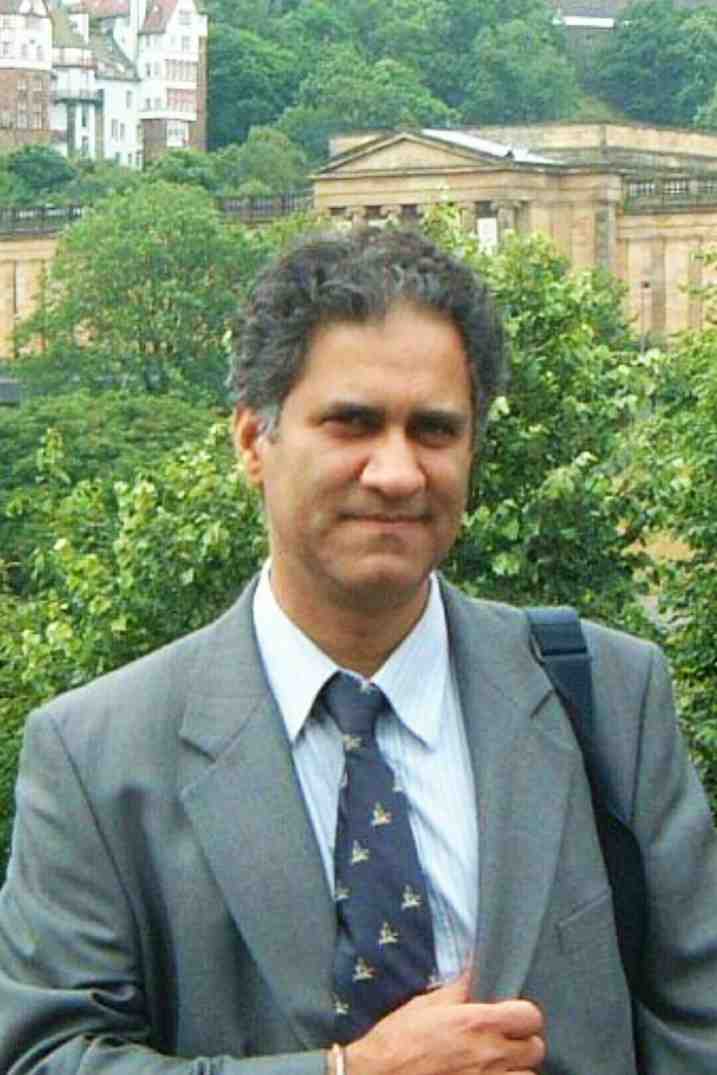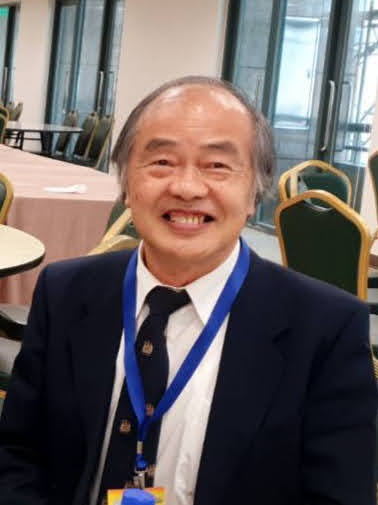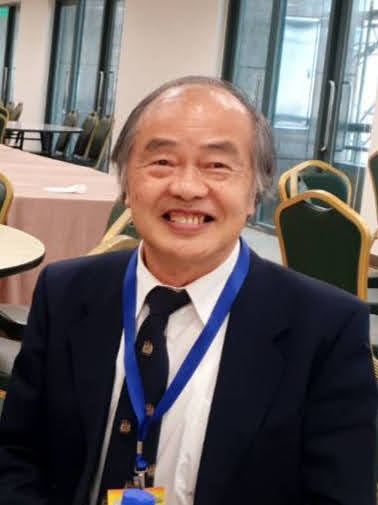AUCTORES
Globalize your Research
Review Article | DOI: https://doi.org/10.31579/2768-2757/169
Professor, Retired, Renton, WA, USA.
*Corresponding Author: Igor Klepikov., Professor, Retired, Renton, WA, USA.
Citation: Igor Klepikov, (2025), Features of First and Emergency Care for Acute Inflammation of Lung Tissue, Journal of Clinical Surgery and Research, 6(4); DOI:10.31579/2768-2757/169
Copyright: © 2025, Igor Klepikov. This is an open access article distributed under the Creative Commons Attribution License, which permits unrestricted use, distribution, and reproduction in any medium, provided the original work is properly cited.
Received: 20 March 2025 | Accepted: 18 April 2025 | Published: 15 May 2025
Keywords: acute pneumonia; etiology; pathogenesis; first aid; disease concept
Successful treatment of acute diseases largely depends on the adequacy of first aid. Analysis of such aid and its results in severe forms of acute pneumonia (AP) shows that the initial treatment of this disease does not correspond to the meaning of such a term. The reason for the existing discrepancy is the negative didactic effect of the long-term priority of antibiotics in the treatment of such patients. Such an important feature of this disease as the uniqueness of the functions of the lung tissue remains outside the theoretical and practical implementation. The existing interpretations of the manifestations of AP contribute to the unfounded diagnosis of sepsis, and the results of treatment cause deep concern among specialists. The long-overdue discrepancy between the doctrine of the disease and the observed facts of medical practice has now acquired a pronounced manifestation, which requires the need for a radical revision of views with subsequent correction of treatment principles.
In modern medicine, priority in the treatment of acute inflammatory processes belongs to etiotropic therapy, the principles of which are based on the dominance of pathogens in the development of this pathology. The basis of such therapy continues to be antibiotics, the prescription of which plays the role of the first and most important aid. In situations where such treatment does not bring the expected effect, auxiliary care is used, which widely includes, regardless of the symptoms of the process, infusion therapy and symptomatic agents. Acute nonspecific inflammation in the lungs (ANSIL) is no exception to this rule, since the modern understanding of diseases of this localization completely repeats the current general doctrine of inflammatory processes. ANSIL is actually represented by acute pneumonia (AP), the term for which has been uniform throughout the history of this disease, but has recently begun to be divided according to the supposed etiological features. For many decades, attention was focused on identifying and suppressing the ANSILS pathogen, while the peculiarity of the localization of such processes with characteristic functional disorders remained out of sight. By now, a huge amount of facts and objective evidence has accumulated that contradict the currently accepted and widespread concept of ANSIL and force us to take a closer look and evaluate the uniqueness and specificity of these diseases. This long-overdue need is an inevitable requirement of the time and its implementation will correct deeply rooted misconceptions, changing the principles and effectiveness of modern therapy.
The picture of classic acute inflammation begins with the reaction of the vessels in the affected area and is accompanied by the development of five classic signs described at the beginning of our era by Celsus and Galen. Centuries of experience, which turned these signs into one of the fundamental canons of medicine, have shown that the loss of function is of primary importance for the specificity of the clinical manifestations of the inflammatory process. It is the damage to a certain organ that allows us to identify specific nosologies already during the examination of the patient, which reflects the specificity of functional disorders. At the same time, the etiology of the process does not affect the clinical features of the disease. For example, pneumococcal pneumonia cannot be confused with pneumococcal meningitis, tonsillitis or otitis media, right? The uniqueness of the development of AP is that the onset of the inflammatory process originates in the vessels of the pulmonary circulation. The cardinal difference in the parameters and functional features of the vessels of the pulmonary and systemic circulation is known to every graduate of a medical university and does not require additional evidence. Arterial pressure in the pulmonary vessels is approximately 8 times lower than on the periphery [1]. and maintaining these proportions is important for the synchronous operation of the two halves of the heart and both circulatory systems. A sudden increase in pressure in the pulmonary vessels by 5 mm Hg leads to interstitial edema of the lung tissue, and by 10 mm Hg - to pulmonary edema [2]. As is known, in real conditions our organism has various protective mechanisms that act autonomously, independently of our consciousness. One of such reactions is the so-called unloading reflex, discovered by H. Schwiegk almost a century ago [3]. An important feature of this reflex is a decrease in systemic pressure and deposition of part of the circulating blood on the periphery, which is accompanied by unloading of the vessels of the pulmonary circulation. More than forty years ago, the author of these lines carried out a large work, which included various studies, including an experimental model of AP and clinical testing of new therapeutic approaches to the treatment of aggressive forms of the disease, which from the time of primary diagnosis were purposefully concentrated in our department. However, after emigration, the opportunity to present the obtained results to a wide range of specialists appeared only in recent years [4,5]. The main objective of the work was to bring the concept of AP in line with the classical canons of medical science, which forced us to pay the most serious attention to pathogenetic methods of providing assistance. The use of such methods as cervical novocaine vagosympathetic blockade (CVSB), cupping therapy (CPT) or short-term general cooling (GC) of the patient in the initial period of severe forms of AP brought a quick positive result. Registration of comparative rheopulmonograms made it possible to obtain objective confirmation of the reflex effect of the inflammation focus on pulmonary blood flow, when literally a few minutes after the procedure the ratio between ventilation and blood flow leveled out, a tendency to normalize respiratory and circulatory parameters appeared [4,5]. The clinical symptoms of such severe forms of AP corresponded to the picture of a shock reaction, which disappeared after the above procedures. We interpreted and described this clinical phenomenon as pulmonogenic shock, and considered the mechanism of this reaction as a reflex effect of the focus of pulmonary inflammation on the vessels of the pulmonary circulation with a violation of blood flow in them [4,5]. This explanation is quite justified, since in this sector of the vascular system there are baroreceptors that react to the slightest changes in arterial pressure and are one of the main drivers of the so-called unloading reflex. The severity of these manifestations increases as the expansiveness of the inflammatory reaction increases. The reflex effect of the lesion on the overall pulmonary blood flow has received additional confirmation in recent years using the example of patients with so-called COVID-19 pneumonia. The authors of such studies, studying the results of computed tomography, found a significant decrease in the blood filling of the network of small pulmonary vessels with a diameter of less than 2 mm [6,7]. Moreover, the authors of these studies noted that the more pronounced such deviations are, the more patients need oxygen therapy. The latter circumstance does not depend on the size of the lesion, but such symptoms increase as the aggressiveness of the development of AP increases.Unfortunately, at present the main cause of AP in general and its severe forms in particular remains the inflammatory agent, the suppression of which is the main focus of efforts. The severity of the condition of patients with AP for the diagnosis of possible septic complications is assessed according to generally accepted schemes, in which respiratory and peripheral blood flow disorders are decisive and which are used for all other inflammatory diseases [8,9]. However, if signs of respiratory and circulatory disorders in inflammatory processes of peripheral localization can be a manifestation of septic complications, then for patients with AP such disorders are typical reflections of the onset of the disease, aren't they? Moreover, a decrease in systemic arterial pressure in AP, which in aggressive forms of the process serves as a sign of a compensatory reaction, is considered in modern conditions as a critical factor requiring immediate correction with the help of infusion therapy. The indicated approach to assessing the condition of patients with AP allows sepsis to be diagnosed at the very beginning of the disease [10], and among the sources of septic complications, this disease already exceeds half of all cases of sepsis and septic shock, reaching, according to some data, almost two-thirds of all cases of generalized infection [11-13]. Quite indicative is the fact that the complete uncertainty in the success of infusions in such patients is constantly emphasized by recommendations for the further use of vasopressors. It is no coincidence, in my opinion, that a number of specialists openly report that AP often continues to progress after hospitalization, despite intensive treatment with the development of sepsis and even septic shock [10,14-16]. Due to the particular severity of the course and high mortality, many specialists have recently begun to consider and analyze patients with aggressive forms of AP separately. This approach is very subjective and approximate, although to a certain extent justified, since all the difficulties in solving the problem are concentrated in such patients [17,18]. However, primary and emergency care continue to be based on etiotropic therapy. At the same time, the empirical prescription of antibiotics is accompanied by a waiting period of up to 48-72 hours for the first results [19,20]. In the conditions of a rapidly progressing process, classifying such care as emergency measures does not seem justified even with a big stretch. In such situations, the prerogative of the pathogen and the choice of antimicrobial agents continues to operate, although, as is known, specific signs and disorders are due to the localization of the inflammatory process. In modern discussions, the fact that an antibiotic acts only on certain types of pathogens, without directly affecting the mechanisms of inflammation is not even discussed. Having only an indirect effect on the underlying disease, antibiotics can in no way claim to be an emergency treatment they actually are today. The second method, widely used in severe forms of AP development as a first-priority measure, is infusion therapy, which also cannot provide the necessary emergency care to such patients. Moreover, especially in the initial period of the disease, when the phenomena of edema and infiltration in the focus of pulmonary inflammation increase especially intensively and the irritant of the baroreceptors includes the unloading reflex, infusion therapy acts as an antagonist of those compensatory reactions that are aimed at unloading the vessels of the pulmonary circulation. In addition, infusions in this period of the disease can stimulate the above-mentioned phenomena of edema and tissue infiltration, which we have proven in the course of our studies [4,5]. That is why we abandoned this method in AP, which only contributed to the rapid achievement of successful treatment. Another method of providing first aid to patients with AP is oxygen therapy. This procedure deserves attention only because it is usually used first and often at the prehospital stage. It is more in line with symptomatic and supportive therapy, but it is expected that its use will bring at least some relief to patients. For a long time, it was believed that the main cause of gas exchange disorders in AP are infiltrative changes in the lung tissue that block the diffusion of gases, but it was not possible to establish a proportionality between the volume of pulmonary inflammation and a decrease in blood oxygenation. This procedure involves increasing the concentration of oxygen in the inhaled air, which should contribute to an increase in blood oxygenation. An intense discussion on this topic arose during the SARS-CoV-2 pandemic, when the traditionally familiar hope for antibiotics disappeared and specialists began to pay attention to auxiliary and symptomatic methods. An endless stream of publications in the medical literature on this topic was devoted to various aspects of increasing the efficiency of oxygen supply, the discussion of which extended from the position of patients during the procedure to the comparative use of various technical options for connecting and directing the oxygen flow to the nasopharynx of patients. It is quite obvious that such efforts to improve the symptomatic procedure could not have a significant impact on the overall treatment results of patients with viral pneumonia. However, in this case, another circumstance attracts attention. Among the abundance of publications concerning methods of gas exchange correction, the author did not come across a single work where the analysis of the causes of respiratory failure would go beyond ventilation-diffusion disorders.
As is known, the respiratory function is gas exchange between the outside air and the body's cells. This cycle consists of successive links and if any of them is disrupted, respiratory failure may occur. If methods of improving ventilation and diffusion are used in case of inflammatory damage to the lung tissue, this does not mean that respiratory failure is eliminated. During the discussion, the question of the role of the vascular factor in the development of respiratory failure in patients with AP remained open. But the pulmonary vessels, which are the first in the circulatory system to react to a sudden irritant, in the most severe cases of the disease exhibit their reflex reaction in the form of a generalized spasm, which leads to a change in the proportions between blood flow and ventilation, stimulating an increase in the latter. In this regard, the appearance of dyspnea is an attempt by the body to compensate for disruptions in pulmonary blood flow and use the massaging effect of breathing on blood circulation. The latter statement may cause skepticism and objections, but it has very convincing objective evidence. Thus, after conducting CVSB, on the control comparative rheopulmonogram, within a few minutes (with the appearance of Horner's syndrome), signs of normalization of ventilation-perfusion ratios with a decrease in the frequency of respiratory excursions and heart contractions, as well as a decrease in the amplitude of the systolic wave were noted (4,5). In other words, such a rapid positive effect after blocking the autonomic innervation of the lung on the affected side can only be explained by the elimination of the reflex effect of the inflammation focus on the vascular network. These studies were performed at the peak of our capabilities at that time, and today the study of this phenomenon can be significantly expanded. At the same time, the results of our previous studies, as well as the materials of other researchers (6,7) show that oxygen insufflation in patients with AP has a serious obstacle to rapid and complete oxygenation of the blood in the form of generalized spasm of the pulmonary vessels. Removal of this obstruction by one of the above methods (in the most severe cases, CVSB and GC are best) makes the use of oxygen unnecessary in most cases. Thus, the procedures for the primary treatment of patients with AP, which currently perform the functions of first and emergency care, do not meet such criteria and are not able to immediately provide a noticeable positive result with its reflection in the control functional indicators. Ultimately, the existing approaches to the primary treatment of AP lead to the loss of precious time and do not prevent the development of the process, which, against the background of continuing such therapy, can lead to severe complications. The reason for this failure is the continued concentration of efforts on achieving the effect of etiotropic care. The futility of this direction has been repeatedly confirmed not only by the lack of differential diagnostic criteria for bacterial forms of the disease, but also by the impossibility of such a separation of bacterial and viral pneumonia (21-23). Such results have repeatedly emphasized that the nature of the pathogen is not a factor determining the characteristics of the disease development, and the desire to clarify the microbiological diagnosis of AP by any means and use targeted etiotropic therapy continue to dominate the strategy for solving the problem. The issue of a detailed revision and rethinking of the existing concept of the disease still remains open and this long-overdue need is constantly being replaced by attempts to use tactical methods. In recent years, the search for criteria in the form of biomarkers, tests and other factors for predicting severe and complicated course of AP and the probability of a fatal outcome has become very popular (24-27). The very principle of this approach and the goals set cause deep disappointment, since they reflect and testify to the recognition of the hopelessness and prophetic nature of the expected results embedded in them. In other words, instead of an active and radical solution to the problem, it is proposed to define criteria that can only predict further individual consequences of the process. Of the above-mentioned first aid methods, two of them, CPT and GC, have been used for many centuries, although they did not have a clear scientific basis and were determined by trial and error. However, the duration of their popularity suggests that they brought relief to patients. Otherwise, they could not have enjoyed such a long-term recognition. Studying this experience at the current level of knowledge is an important step in solving the problem under discussion, and the first results in this direction have already been obtained (4,5). At the same time, the practice of recent years confirms an indecisive wait-and-see attitude, without targeted attempts to influence the mechanisms of the inflammatory process. For example, when treating patients with COVID-19 pneumonia, many specialists adhered to monitoring patients and choosing the time of their intubation, describing the chosen tactics as a strategy (28,29). However, such a strategy cannot lead to any solutions and successes, since this term hides conventional supportive therapy. Such information is additional evidence that when solving the problem of AP, decisive volitional efforts are needed to change ideas about its essence.
A brief analysis of the current state of the problem of AP shows that the main obstacle to achieving successful results are mental distortions of professional ideas about the essence of the disease under discussion. The formed worldview is the result of a long-term negative didactic influence of the role of antibiotics. The functional uniqueness of the lungs with their complete opposite to other localizations of inflammation remains unaccounted for in the general concept of the disease, but the influence of these features on the development and course of AP will act regardless of our desires and priorities. It is unrealistic to bypass or exclude these factors from the pathogenesis of the disease. They can only be influenced by appropriate methods. The inevitable role of such factors in the pathogenesis of the disease and the importance of their correction when providing first aid for AP is a priority task today, and a quick solution to the latter will help to avoid many human disasters. However, the beginning of this process lies in bringing the concept of AP in line with the canons of medical science.
the author states that he has no conflict of interest.
Clearly Auctoresonline and particularly Psychology and Mental Health Care Journal is dedicated to improving health care services for individuals and populations. The editorial boards' ability to efficiently recognize and share the global importance of health literacy with a variety of stakeholders. Auctoresonline publishing platform can be used to facilitate of optimal client-based services and should be added to health care professionals' repertoire of evidence-based health care resources.

Journal of Clinical Cardiology and Cardiovascular Intervention The submission and review process was adequate. However I think that the publication total value should have been enlightened in early fases. Thank you for all.

Journal of Women Health Care and Issues By the present mail, I want to say thank to you and tour colleagues for facilitating my published article. Specially thank you for the peer review process, support from the editorial office. I appreciate positively the quality of your journal.
Journal of Clinical Research and Reports I would be very delighted to submit my testimonial regarding the reviewer board and the editorial office. The reviewer board were accurate and helpful regarding any modifications for my manuscript. And the editorial office were very helpful and supportive in contacting and monitoring with any update and offering help. It was my pleasure to contribute with your promising Journal and I am looking forward for more collaboration.

We would like to thank the Journal of Thoracic Disease and Cardiothoracic Surgery because of the services they provided us for our articles. The peer-review process was done in a very excellent time manner, and the opinions of the reviewers helped us to improve our manuscript further. The editorial office had an outstanding correspondence with us and guided us in many ways. During a hard time of the pandemic that is affecting every one of us tremendously, the editorial office helped us make everything easier for publishing scientific work. Hope for a more scientific relationship with your Journal.

The peer-review process which consisted high quality queries on the paper. I did answer six reviewers’ questions and comments before the paper was accepted. The support from the editorial office is excellent.

Journal of Neuroscience and Neurological Surgery. I had the experience of publishing a research article recently. The whole process was simple from submission to publication. The reviewers made specific and valuable recommendations and corrections that improved the quality of my publication. I strongly recommend this Journal.

Dr. Katarzyna Byczkowska My testimonial covering: "The peer review process is quick and effective. The support from the editorial office is very professional and friendly. Quality of the Clinical Cardiology and Cardiovascular Interventions is scientific and publishes ground-breaking research on cardiology that is useful for other professionals in the field.

Thank you most sincerely, with regard to the support you have given in relation to the reviewing process and the processing of my article entitled "Large Cell Neuroendocrine Carcinoma of The Prostate Gland: A Review and Update" for publication in your esteemed Journal, Journal of Cancer Research and Cellular Therapeutics". The editorial team has been very supportive.

Testimony of Journal of Clinical Otorhinolaryngology: work with your Reviews has been a educational and constructive experience. The editorial office were very helpful and supportive. It was a pleasure to contribute to your Journal.

Dr. Bernard Terkimbi Utoo, I am happy to publish my scientific work in Journal of Women Health Care and Issues (JWHCI). The manuscript submission was seamless and peer review process was top notch. I was amazed that 4 reviewers worked on the manuscript which made it a highly technical, standard and excellent quality paper. I appreciate the format and consideration for the APC as well as the speed of publication. It is my pleasure to continue with this scientific relationship with the esteem JWHCI.

This is an acknowledgment for peer reviewers, editorial board of Journal of Clinical Research and Reports. They show a lot of consideration for us as publishers for our research article “Evaluation of the different factors associated with side effects of COVID-19 vaccination on medical students, Mutah university, Al-Karak, Jordan”, in a very professional and easy way. This journal is one of outstanding medical journal.
Dear Hao Jiang, to Journal of Nutrition and Food Processing We greatly appreciate the efficient, professional and rapid processing of our paper by your team. If there is anything else we should do, please do not hesitate to let us know. On behalf of my co-authors, we would like to express our great appreciation to editor and reviewers.

As an author who has recently published in the journal "Brain and Neurological Disorders". I am delighted to provide a testimonial on the peer review process, editorial office support, and the overall quality of the journal. The peer review process at Brain and Neurological Disorders is rigorous and meticulous, ensuring that only high-quality, evidence-based research is published. The reviewers are experts in their fields, and their comments and suggestions were constructive and helped improve the quality of my manuscript. The review process was timely and efficient, with clear communication from the editorial office at each stage. The support from the editorial office was exceptional throughout the entire process. The editorial staff was responsive, professional, and always willing to help. They provided valuable guidance on formatting, structure, and ethical considerations, making the submission process seamless. Moreover, they kept me informed about the status of my manuscript and provided timely updates, which made the process less stressful. The journal Brain and Neurological Disorders is of the highest quality, with a strong focus on publishing cutting-edge research in the field of neurology. The articles published in this journal are well-researched, rigorously peer-reviewed, and written by experts in the field. The journal maintains high standards, ensuring that readers are provided with the most up-to-date and reliable information on brain and neurological disorders. In conclusion, I had a wonderful experience publishing in Brain and Neurological Disorders. The peer review process was thorough, the editorial office provided exceptional support, and the journal's quality is second to none. I would highly recommend this journal to any researcher working in the field of neurology and brain disorders.

Dear Agrippa Hilda, Journal of Neuroscience and Neurological Surgery, Editorial Coordinator, I trust this message finds you well. I want to extend my appreciation for considering my article for publication in your esteemed journal. I am pleased to provide a testimonial regarding the peer review process and the support received from your editorial office. The peer review process for my paper was carried out in a highly professional and thorough manner. The feedback and comments provided by the authors were constructive and very useful in improving the quality of the manuscript. This rigorous assessment process undoubtedly contributes to the high standards maintained by your journal.

International Journal of Clinical Case Reports and Reviews. I strongly recommend to consider submitting your work to this high-quality journal. The support and availability of the Editorial staff is outstanding and the review process was both efficient and rigorous.

Thank you very much for publishing my Research Article titled “Comparing Treatment Outcome Of Allergic Rhinitis Patients After Using Fluticasone Nasal Spray And Nasal Douching" in the Journal of Clinical Otorhinolaryngology. As Medical Professionals we are immensely benefited from study of various informative Articles and Papers published in this high quality Journal. I look forward to enriching my knowledge by regular study of the Journal and contribute my future work in the field of ENT through the Journal for use by the medical fraternity. The support from the Editorial office was excellent and very prompt. I also welcome the comments received from the readers of my Research Article.

Dear Erica Kelsey, Editorial Coordinator of Cancer Research and Cellular Therapeutics Our team is very satisfied with the processing of our paper by your journal. That was fast, efficient, rigorous, but without unnecessary complications. We appreciated the very short time between the submission of the paper and its publication on line on your site.

I am very glad to say that the peer review process is very successful and fast and support from the Editorial Office. Therefore, I would like to continue our scientific relationship for a long time. And I especially thank you for your kindly attention towards my article. Have a good day!

"We recently published an article entitled “Influence of beta-Cyclodextrins upon the Degradation of Carbofuran Derivatives under Alkaline Conditions" in the Journal of “Pesticides and Biofertilizers” to show that the cyclodextrins protect the carbamates increasing their half-life time in the presence of basic conditions This will be very helpful to understand carbofuran behaviour in the analytical, agro-environmental and food areas. We greatly appreciated the interaction with the editor and the editorial team; we were particularly well accompanied during the course of the revision process, since all various steps towards publication were short and without delay".

I would like to express my gratitude towards you process of article review and submission. I found this to be very fair and expedient. Your follow up has been excellent. I have many publications in national and international journal and your process has been one of the best so far. Keep up the great work.

We are grateful for this opportunity to provide a glowing recommendation to the Journal of Psychiatry and Psychotherapy. We found that the editorial team were very supportive, helpful, kept us abreast of timelines and over all very professional in nature. The peer review process was rigorous, efficient and constructive that really enhanced our article submission. The experience with this journal remains one of our best ever and we look forward to providing future submissions in the near future.

I am very pleased to serve as EBM of the journal, I hope many years of my experience in stem cells can help the journal from one way or another. As we know, stem cells hold great potential for regenerative medicine, which are mostly used to promote the repair response of diseased, dysfunctional or injured tissue using stem cells or their derivatives. I think Stem Cell Research and Therapeutics International is a great platform to publish and share the understanding towards the biology and translational or clinical application of stem cells.

I would like to give my testimony in the support I have got by the peer review process and to support the editorial office where they were of asset to support young author like me to be encouraged to publish their work in your respected journal and globalize and share knowledge across the globe. I really give my great gratitude to your journal and the peer review including the editorial office.

I am delighted to publish our manuscript entitled "A Perspective on Cocaine Induced Stroke - Its Mechanisms and Management" in the Journal of Neuroscience and Neurological Surgery. The peer review process, support from the editorial office, and quality of the journal are excellent. The manuscripts published are of high quality and of excellent scientific value. I recommend this journal very much to colleagues.

Dr.Tania Muñoz, My experience as researcher and author of a review article in The Journal Clinical Cardiology and Interventions has been very enriching and stimulating. The editorial team is excellent, performs its work with absolute responsibility and delivery. They are proactive, dynamic and receptive to all proposals. Supporting at all times the vast universe of authors who choose them as an option for publication. The team of review specialists, members of the editorial board, are brilliant professionals, with remarkable performance in medical research and scientific methodology. Together they form a frontline team that consolidates the JCCI as a magnificent option for the publication and review of high-level medical articles and broad collective interest. I am honored to be able to share my review article and open to receive all your comments.

“The peer review process of JPMHC is quick and effective. Authors are benefited by good and professional reviewers with huge experience in the field of psychology and mental health. The support from the editorial office is very professional. People to contact to are friendly and happy to help and assist any query authors might have. Quality of the Journal is scientific and publishes ground-breaking research on mental health that is useful for other professionals in the field”.

Dear editorial department: On behalf of our team, I hereby certify the reliability and superiority of the International Journal of Clinical Case Reports and Reviews in the peer review process, editorial support, and journal quality. Firstly, the peer review process of the International Journal of Clinical Case Reports and Reviews is rigorous, fair, transparent, fast, and of high quality. The editorial department invites experts from relevant fields as anonymous reviewers to review all submitted manuscripts. These experts have rich academic backgrounds and experience, and can accurately evaluate the academic quality, originality, and suitability of manuscripts. The editorial department is committed to ensuring the rigor of the peer review process, while also making every effort to ensure a fast review cycle to meet the needs of authors and the academic community. Secondly, the editorial team of the International Journal of Clinical Case Reports and Reviews is composed of a group of senior scholars and professionals with rich experience and professional knowledge in related fields. The editorial department is committed to assisting authors in improving their manuscripts, ensuring their academic accuracy, clarity, and completeness. Editors actively collaborate with authors, providing useful suggestions and feedback to promote the improvement and development of the manuscript. We believe that the support of the editorial department is one of the key factors in ensuring the quality of the journal. Finally, the International Journal of Clinical Case Reports and Reviews is renowned for its high- quality articles and strict academic standards. The editorial department is committed to publishing innovative and academically valuable research results to promote the development and progress of related fields. The International Journal of Clinical Case Reports and Reviews is reasonably priced and ensures excellent service and quality ratio, allowing authors to obtain high-level academic publishing opportunities in an affordable manner. I hereby solemnly declare that the International Journal of Clinical Case Reports and Reviews has a high level of credibility and superiority in terms of peer review process, editorial support, reasonable fees, and journal quality. Sincerely, Rui Tao.

Clinical Cardiology and Cardiovascular Interventions I testity the covering of the peer review process, support from the editorial office, and quality of the journal.

Clinical Cardiology and Cardiovascular Interventions, we deeply appreciate the interest shown in our work and its publication. It has been a true pleasure to collaborate with you. The peer review process, as well as the support provided by the editorial office, have been exceptional, and the quality of the journal is very high, which was a determining factor in our decision to publish with you.
The peer reviewers process is quick and effective, the supports from editorial office is excellent, the quality of journal is high. I would like to collabroate with Internatioanl journal of Clinical Case Reports and Reviews journal clinically in the future time.

Clinical Cardiology and Cardiovascular Interventions, I would like to express my sincerest gratitude for the trust placed in our team for the publication in your journal. It has been a true pleasure to collaborate with you on this project. I am pleased to inform you that both the peer review process and the attention from the editorial coordination have been excellent. Your team has worked with dedication and professionalism to ensure that your publication meets the highest standards of quality. We are confident that this collaboration will result in mutual success, and we are eager to see the fruits of this shared effort.

Dear Dr. Jessica Magne, Editorial Coordinator 0f Clinical Cardiology and Cardiovascular Interventions, I hope this message finds you well. I want to express my utmost gratitude for your excellent work and for the dedication and speed in the publication process of my article titled "Navigating Innovation: Qualitative Insights on Using Technology for Health Education in Acute Coronary Syndrome Patients." I am very satisfied with the peer review process, the support from the editorial office, and the quality of the journal. I hope we can maintain our scientific relationship in the long term.
Dear Monica Gissare, - Editorial Coordinator of Nutrition and Food Processing. ¨My testimony with you is truly professional, with a positive response regarding the follow-up of the article and its review, you took into account my qualities and the importance of the topic¨.

Dear Dr. Jessica Magne, Editorial Coordinator 0f Clinical Cardiology and Cardiovascular Interventions, The review process for the article “The Handling of Anti-aggregants and Anticoagulants in the Oncologic Heart Patient Submitted to Surgery” was extremely rigorous and detailed. From the initial submission to the final acceptance, the editorial team at the “Journal of Clinical Cardiology and Cardiovascular Interventions” demonstrated a high level of professionalism and dedication. The reviewers provided constructive and detailed feedback, which was essential for improving the quality of our work. Communication was always clear and efficient, ensuring that all our questions were promptly addressed. The quality of the “Journal of Clinical Cardiology and Cardiovascular Interventions” is undeniable. It is a peer-reviewed, open-access publication dedicated exclusively to disseminating high-quality research in the field of clinical cardiology and cardiovascular interventions. The journal's impact factor is currently under evaluation, and it is indexed in reputable databases, which further reinforces its credibility and relevance in the scientific field. I highly recommend this journal to researchers looking for a reputable platform to publish their studies.

Dear Editorial Coordinator of the Journal of Nutrition and Food Processing! "I would like to thank the Journal of Nutrition and Food Processing for including and publishing my article. The peer review process was very quick, movement and precise. The Editorial Board has done an extremely conscientious job with much help, valuable comments and advices. I find the journal very valuable from a professional point of view, thank you very much for allowing me to be part of it and I would like to participate in the future!”

Dealing with The Journal of Neurology and Neurological Surgery was very smooth and comprehensive. The office staff took time to address my needs and the response from editors and the office was prompt and fair. I certainly hope to publish with this journal again.Their professionalism is apparent and more than satisfactory. Susan Weiner

My Testimonial Covering as fellowing: Lin-Show Chin. The peer reviewers process is quick and effective, the supports from editorial office is excellent, the quality of journal is high. I would like to collabroate with Internatioanl journal of Clinical Case Reports and Reviews.

My experience publishing in Psychology and Mental Health Care was exceptional. The peer review process was rigorous and constructive, with reviewers providing valuable insights that helped enhance the quality of our work. The editorial team was highly supportive and responsive, making the submission process smooth and efficient. The journal's commitment to high standards and academic rigor makes it a respected platform for quality research. I am grateful for the opportunity to publish in such a reputable journal.
My experience publishing in International Journal of Clinical Case Reports and Reviews was exceptional. I Come forth to Provide a Testimonial Covering the Peer Review Process and the editorial office for the Professional and Impartial Evaluation of the Manuscript.

I would like to offer my testimony in the support. I have received through the peer review process and support the editorial office where they are to support young authors like me, encourage them to publish their work in your esteemed journals, and globalize and share knowledge globally. I really appreciate your journal, peer review, and editorial office.
Dear Agrippa Hilda- Editorial Coordinator of Journal of Neuroscience and Neurological Surgery, "The peer review process was very quick and of high quality, which can also be seen in the articles in the journal. The collaboration with the editorial office was very good."

I would like to express my sincere gratitude for the support and efficiency provided by the editorial office throughout the publication process of my article, “Delayed Vulvar Metastases from Rectal Carcinoma: A Case Report.” I greatly appreciate the assistance and guidance I received from your team, which made the entire process smooth and efficient. The peer review process was thorough and constructive, contributing to the overall quality of the final article. I am very grateful for the high level of professionalism and commitment shown by the editorial staff, and I look forward to maintaining a long-term collaboration with the International Journal of Clinical Case Reports and Reviews.
To Dear Erin Aust, I would like to express my heartfelt appreciation for the opportunity to have my work published in this esteemed journal. The entire publication process was smooth and well-organized, and I am extremely satisfied with the final result. The Editorial Team demonstrated the utmost professionalism, providing prompt and insightful feedback throughout the review process. Their clear communication and constructive suggestions were invaluable in enhancing my manuscript, and their meticulous attention to detail and dedication to quality are truly commendable. Additionally, the support from the Editorial Office was exceptional. From the initial submission to the final publication, I was guided through every step of the process with great care and professionalism. The team's responsiveness and assistance made the entire experience both easy and stress-free. I am also deeply impressed by the quality and reputation of the journal. It is an honor to have my research featured in such a respected publication, and I am confident that it will make a meaningful contribution to the field.

"I am grateful for the opportunity of contributing to [International Journal of Clinical Case Reports and Reviews] and for the rigorous review process that enhances the quality of research published in your esteemed journal. I sincerely appreciate the time and effort of your team who have dedicatedly helped me in improvising changes and modifying my manuscript. The insightful comments and constructive feedback provided have been invaluable in refining and strengthening my work".

I thank the ‘Journal of Clinical Research and Reports’ for accepting this article for publication. This is a rigorously peer reviewed journal which is on all major global scientific data bases. I note the review process was prompt, thorough and professionally critical. It gave us an insight into a number of important scientific/statistical issues. The review prompted us to review the relevant literature again and look at the limitations of the study. The peer reviewers were open, clear in the instructions and the editorial team was very prompt in their communication. This journal certainly publishes quality research articles. I would recommend the journal for any future publications.

Dear Jessica Magne, with gratitude for the joint work. Fast process of receiving and processing the submitted scientific materials in “Clinical Cardiology and Cardiovascular Interventions”. High level of competence of the editors with clear and correct recommendations and ideas for enriching the article.

We found the peer review process quick and positive in its input. The support from the editorial officer has been very agile, always with the intention of improving the article and taking into account our subsequent corrections.

My article, titled 'No Way Out of the Smartphone Epidemic Without Considering the Insights of Brain Research,' has been republished in the International Journal of Clinical Case Reports and Reviews. The review process was seamless and professional, with the editors being both friendly and supportive. I am deeply grateful for their efforts.
To Dear Erin Aust – Editorial Coordinator of Journal of General Medicine and Clinical Practice! I declare that I am absolutely satisfied with your work carried out with great competence in following the manuscript during the various stages from its receipt, during the revision process to the final acceptance for publication. Thank Prof. Elvira Farina

Dear Jessica, and the super professional team of the ‘Clinical Cardiology and Cardiovascular Interventions’ I am sincerely grateful to the coordinated work of the journal team for the no problem with the submission of my manuscript: “Cardiometabolic Disorders in A Pregnant Woman with Severe Preeclampsia on the Background of Morbid Obesity (Case Report).” The review process by 5 experts was fast, and the comments were professional, which made it more specific and academic, and the process of publication and presentation of the article was excellent. I recommend that my colleagues publish articles in this journal, and I am interested in further scientific cooperation. Sincerely and best wishes, Dr. Oleg Golyanovskiy.

Dear Ashley Rosa, Editorial Coordinator of the journal - Psychology and Mental Health Care. " The process of obtaining publication of my article in the Psychology and Mental Health Journal was positive in all areas. The peer review process resulted in a number of valuable comments, the editorial process was collaborative and timely, and the quality of this journal has been quickly noticed, resulting in alternative journals contacting me to publish with them." Warm regards, Susan Anne Smith, PhD. Australian Breastfeeding Association.

Dear Jessica Magne, Editorial Coordinator, Clinical Cardiology and Cardiovascular Interventions, Auctores Publishing LLC. I appreciate the journal (JCCI) editorial office support, the entire team leads were always ready to help, not only on technical front but also on thorough process. Also, I should thank dear reviewers’ attention to detail and creative approach to teach me and bring new insights by their comments. Surely, more discussions and introduction of other hemodynamic devices would provide better prevention and management of shock states. Your efforts and dedication in presenting educational materials in this journal are commendable. Best wishes from, Farahnaz Fallahian.
Dear Maria Emerson, Editorial Coordinator, International Journal of Clinical Case Reports and Reviews, Auctores Publishing LLC. I am delighted to have published our manuscript, "Acute Colonic Pseudo-Obstruction (ACPO): A rare but serious complication following caesarean section." I want to thank the editorial team, especially Maria Emerson, for their prompt review of the manuscript, quick responses to queries, and overall support. Yours sincerely Dr. Victor Olagundoye.

Dear Ashley Rosa, Editorial Coordinator, International Journal of Clinical Case Reports and Reviews. Many thanks for publishing this manuscript after I lost confidence the editors were most helpful, more than other journals Best wishes from, Susan Anne Smith, PhD. Australian Breastfeeding Association.

Dear Agrippa Hilda, Editorial Coordinator, Journal of Neuroscience and Neurological Surgery. The entire process including article submission, review, revision, and publication was extremely easy. The journal editor was prompt and helpful, and the reviewers contributed to the quality of the paper. Thank you so much! Eric Nussbaum, MD
Dr Hala Al Shaikh This is to acknowledge that the peer review process for the article ’ A Novel Gnrh1 Gene Mutation in Four Omani Male Siblings, Presentation and Management ’ sent to the International Journal of Clinical Case Reports and Reviews was quick and smooth. The editorial office was prompt with easy communication.

Dear Erin Aust, Editorial Coordinator, Journal of General Medicine and Clinical Practice. We are pleased to share our experience with the “Journal of General Medicine and Clinical Practice”, following the successful publication of our article. The peer review process was thorough and constructive, helping to improve the clarity and quality of the manuscript. We are especially thankful to Ms. Erin Aust, the Editorial Coordinator, for her prompt communication and continuous support throughout the process. Her professionalism ensured a smooth and efficient publication experience. The journal upholds high editorial standards, and we highly recommend it to fellow researchers seeking a credible platform for their work. Best wishes By, Dr. Rakhi Mishra.

Dear Jessica Magne, Editorial Coordinator, Clinical Cardiology and Cardiovascular Interventions, Auctores Publishing LLC. The peer review process of the journal of Clinical Cardiology and Cardiovascular Interventions was excellent and fast, as was the support of the editorial office and the quality of the journal. Kind regards Walter F. Riesen Prof. Dr. Dr. h.c. Walter F. Riesen.

Dear Ashley Rosa, Editorial Coordinator, International Journal of Clinical Case Reports and Reviews, Auctores Publishing LLC. Thank you for publishing our article, Exploring Clozapine's Efficacy in Managing Aggression: A Multiple Single-Case Study in Forensic Psychiatry in the international journal of clinical case reports and reviews. We found the peer review process very professional and efficient. The comments were constructive, and the whole process was efficient. On behalf of the co-authors, I would like to thank you for publishing this article. With regards, Dr. Jelle R. Lettinga.

Dear Clarissa Eric, Editorial Coordinator, Journal of Clinical Case Reports and Studies, I would like to express my deep admiration for the exceptional professionalism demonstrated by your journal. I am thoroughly impressed by the speed of the editorial process, the substantive and insightful reviews, and the meticulous preparation of the manuscript for publication. Additionally, I greatly appreciate the courteous and immediate responses from your editorial office to all my inquiries. Best Regards, Dariusz Ziora

Dear Chrystine Mejia, Editorial Coordinator, Journal of Neurodegeneration and Neurorehabilitation, Auctores Publishing LLC, We would like to thank the editorial team for the smooth and high-quality communication leading up to the publication of our article in the Journal of Neurodegeneration and Neurorehabilitation. The reviewers have extensive knowledge in the field, and their relevant questions helped to add value to our publication. Kind regards, Dr. Ravi Shrivastava.

Dear Clarissa Eric, Editorial Coordinator, Journal of Clinical Case Reports and Studies, Auctores Publishing LLC, USA Office: +1-(302)-520-2644. I would like to express my sincere appreciation for the efficient and professional handling of my case report by the ‘Journal of Clinical Case Reports and Studies’. The peer review process was not only fast but also highly constructive—the reviewers’ comments were clear, relevant, and greatly helped me improve the quality and clarity of my manuscript. I also received excellent support from the editorial office throughout the process. Communication was smooth and timely, and I felt well guided at every stage, from submission to publication. The overall quality and rigor of the journal are truly commendable. I am pleased to have published my work with Journal of Clinical Case Reports and Studies, and I look forward to future opportunities for collaboration. Sincerely, Aline Tollet, UCLouvain.
